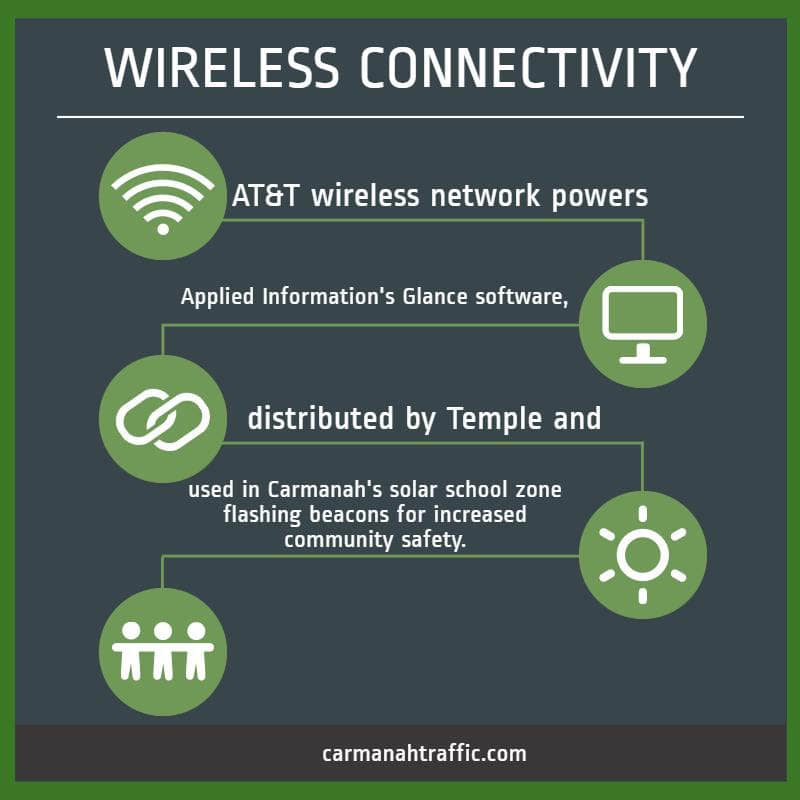Safety in school zones is paramount to a school district and the surrounding community, but for many districts, the challenge of managing a school zone beacon system can become time consuming and expensive, especially the task of ensuring that all of the beacons are operating as needed.
Certain types of school zone beacons have to be programmed manually: someone must physically visit each site and upload calendar instructions so beacons flash when required. In addition, if a beacon isn’t functioning, a district depends on maintenance visits or calls from the public to report failures. However, since wireless technologies have greatly improved in recent years, so have the possibilities for remote monitoring and programming of such devices. Both existing and new school zone beacons can take advantage of these command and control technologies.
Applied Information (AI), which specializes in technology solutions for the traffic industry, recently partnered with AT&T, allowing AI to wirelessly connect school zone beacons with time switches and cloud-based Glance software in communities across the United States.
AI’s distributor Temple, Inc. recently worked in Georgia’s Gwinnett County to install 270 school beacons within a five-day period. The county reported a 90% reduction in calls related to school zone beacon operation thanks to improved communication with each beacon in the system.
Temple is also a distributor for Carmanah Technologies Corp., which offers the R829-G solar school zone flashing beacon, which is fully compatible with AI’s time switch. With the added advantage of being solar-powered, the system is entirely independent of the grid.
With advancements to the wireless connectivity, the monitoring technology it enables, and the beacons themselves, children and their loved ones can experience a safer journey to school, benefiting the community as a whole.
